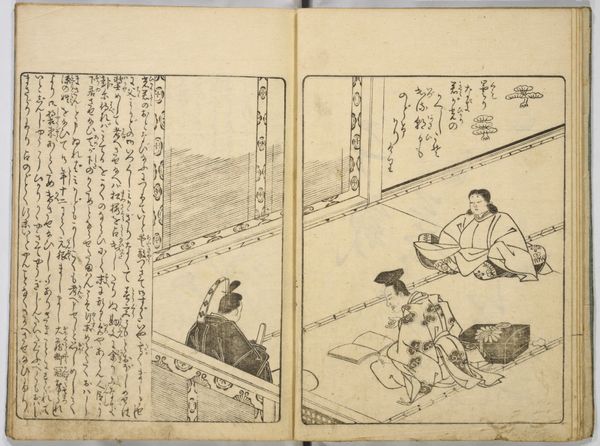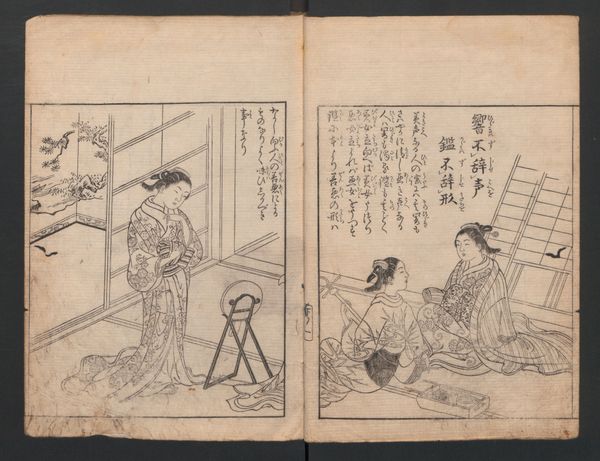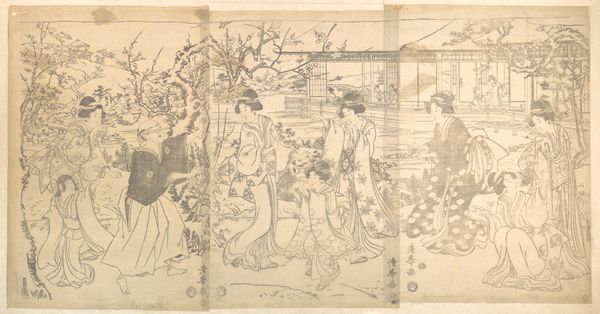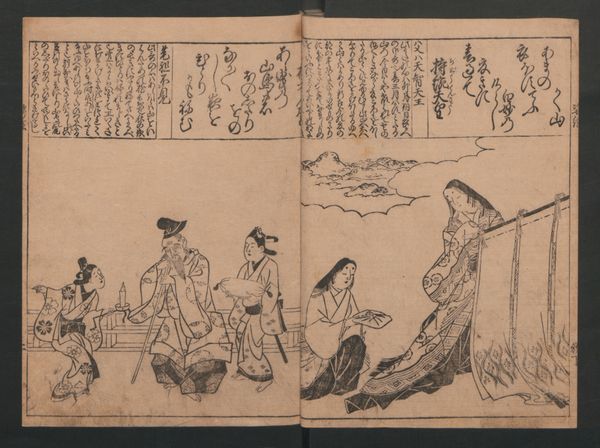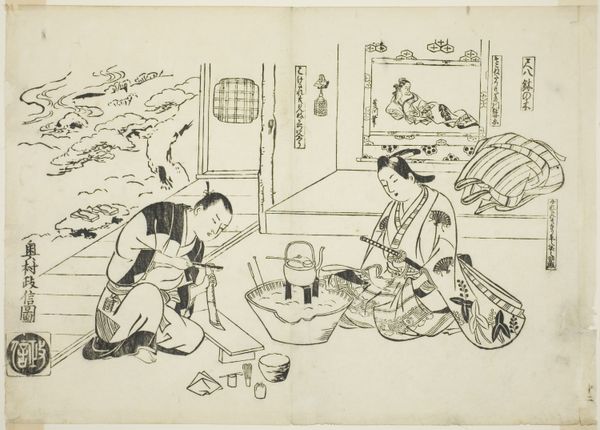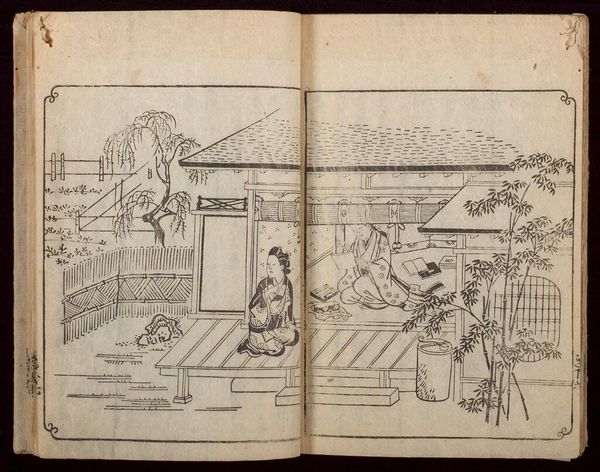
Illustrated Book of Kyōka (comic poems) "Maple Bridge" 1780 - 1800
0:00
0:00
print, textile, woodblock-print
# print
#
book
#
asian-art
#
sketch book
#
textile
#
ukiyo-e
#
figuration
#
woodblock-print
#
genre-painting
Dimensions: 8 1/2 × 6 × 3/8 in. (21.6 × 15.2 × 1 cm)
Copyright: Public Domain
Curator: This illustrated book of kyoka, or comic poems, entitled "Maple Bridge" dates to the late 18th century and is the work of Katsukawa Shuncho. It’s currently held at the Metropolitan Museum of Art. It utilizes woodblock printing on paper. What strikes you most about it? Editor: Immediately, it’s the texture, or rather, the feeling of texture despite the relatively spare use of line. You get this wonderful sense of materiality, not just in the robes of the women depicted, but even in the suggestion of foliage. Curator: The process really dictates that sensation, doesn't it? Thinking about how the blocks are carved, how the ink is applied, and then pressed onto the page gives it that distinctive feel. It really bridges the gap between image and craft object. Editor: Absolutely. And consider the subject matter, genre painting from the Ukiyo-e tradition. These prints weren't just aesthetically pleasing; they circulated within specific social circles. This depiction of women performing daily tasks provides us insights into the lives of ordinary individuals within a complex hierarchical society. Curator: Exactly. I see those contrasts too – the implied labor in creating such a detailed print for what was, relatively speaking, mass consumption, showcasing scenes of leisure. The production process reveals the material conditions that allowed for both the creation and appreciation of the art itself. It really highlights that consumer culture. Editor: And what do these scenes suggest about gender roles? Two women crouched washing, while others lounge. We can ask whose labor is represented and whose is hidden in this rendering? Curator: Thinking about the materials further, even the type of paper would influence the clarity of the print and the durability of the book itself. And access, ownership— these are inherently tied to the economic value of those materials. Editor: It truly illustrates how everyday aesthetics are woven into broader issues of power, class, and gender. It challenges us to view it not merely as a historical artifact, but as an entry point into understanding social dynamics of the period. Curator: Agreed. Considering the layers of artistry and labor in each print certainly shifts how we approach the subject represented within them. Editor: It enriches it, doesn't it? This deeper appreciation for its production enhances its historical and social meaning for contemporary viewers.
Comments
No comments
Be the first to comment and join the conversation on the ultimate creative platform.

